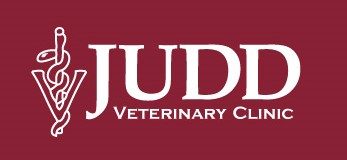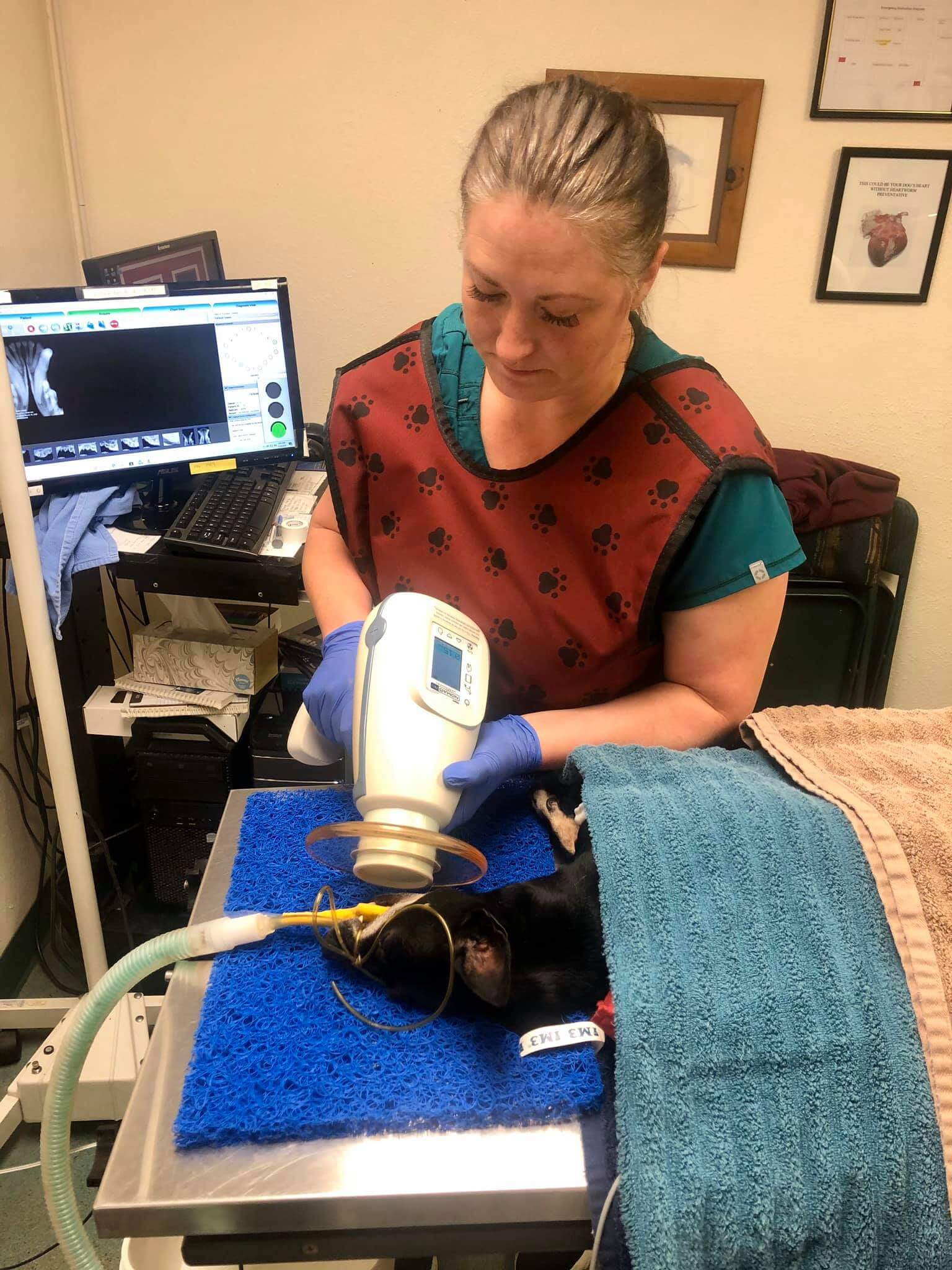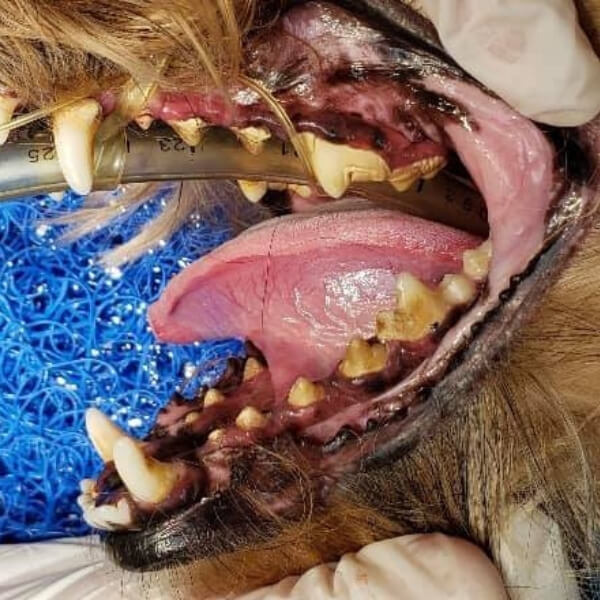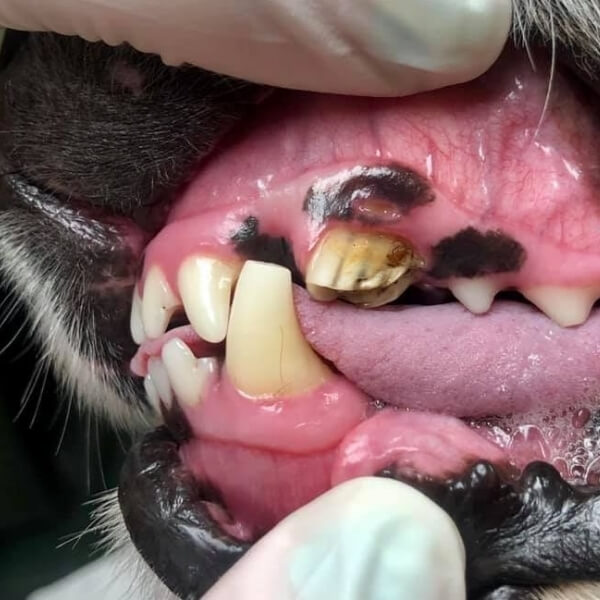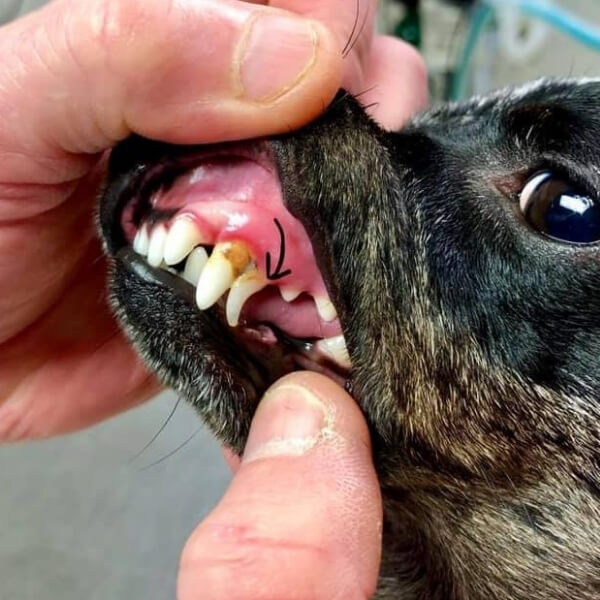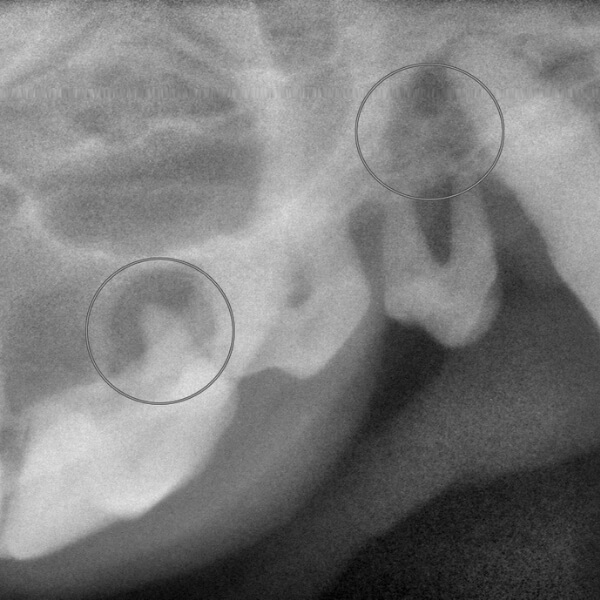Canine & Feline Dentistry
Canine & Feline Dentsitry
Dental disease is the number one disease in dogs and cats, with over 70% of dogs and 50% of cats over 2 years of age having some degree of dental disease. Dental disease is a painful condition, and it is for this reason we have taken a special interest in canine and feline dentistry.
The American Veterinary Dental College indicates symptoms of dental disease include halitosis (bad breath), loose teeth, teeth covered in tartar, pain on opening the mouth or eating, drooling or dropping food from the mouth, bleeding from the mouth, and weight loss. However, some of these symptoms, such as pain, are only noted in very severe dental disease, and this leads many pet owners to feel their pet is okay when they may have significant dental disease. If you lift your pet’s lip and observe brown tartar on the teeth, some dental disease is present; therefore, it is critical your vet examine your pet’s teeth at every physical exam to find these problems early. This is the method we use at Judd Veterinary Clinic. We have also invested in state-of-the-art dental equipment, training, and digital dental radiology to thoroughly examine and treat your pet’s dental disease.
With dental radiology, we find many PAINFUL dental conditions like fractured tooth roots, abscesses, and resorptive lesions that would be missed if x-rays of the teeth were not available. Because dental radiographs are so critical, we perform full mouth digital dental radiographs with ALL our dental prophylaxis (teeth cleaning) procedures. To perform x-rays, your pet will need to be anesthetized, and although there is always a risk with anesthesia, the risk is very slight in a healthy pet. Also, the infection in the mouth is below the gum line and can only be treated by cleaning these areas. Although some veterinarians offer non-anesthetic dental cleanings, it is impossible to perform a thorough exam, x-rays, and proper dental cleaning without anesthesia. If you have any questions about dental disease in your pet, please call our office.
